– Florencia Guerberof (London-based Argentinian Butoh dancer)
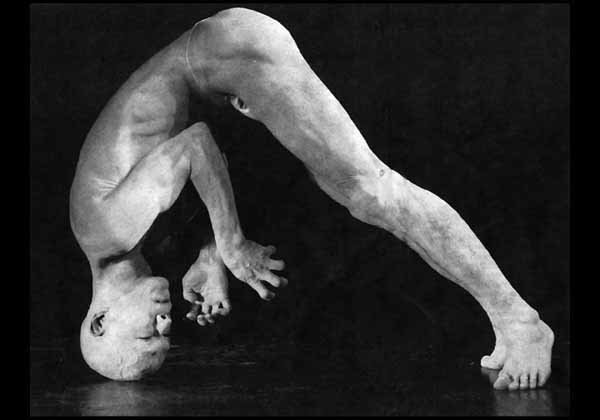
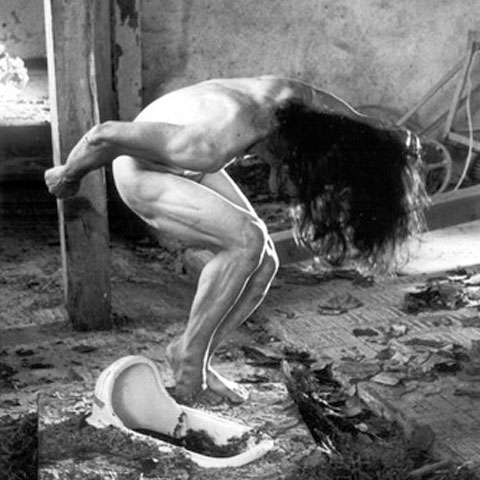
Katsura Kan (L) and Masaki Iwana (R)
Body, Space & Empathetic Participation
If Butoh is carried within the body, where in our world does it belong as performance? Aside from any demand to define Butoh in its totality, there could hardly be a more challenging question.
Most often, we experience Butoh in a theatrical context, knowingly observing the dance as performance on a deliberate stage — whether traditional or simply an area that has been adapted for performance. Yet, there has never been any particular requirement for a staged Butoh and, in an almost dismissive manner, neither has there been need for even an audience. It is easy to then attribute a kind of mystical hermeticism to the Butoh dancers who perform their dance as secret rituals of the subconscious, in reclusive locations like caves or sand dunes in the desert. Certainly these ascetic experiences serve a purpose for the dancers, but they do risk alienating us as audiences in our curiosity to observe and understand Butoh form.
Here is where Butoh begins its truly contextual evolution in the heart of not only the dancer, but also the audience. With an unlimited opportunity to call any space a stage, Butoh dancers may deliberately engage their environments as instinctual sources of inspiration for their choreography, or as symbolic enhancers for the audience’s appreciation. Of course, it is ideal to have both — for the result is then a destruction of the passive relationship between dancer and audience, which so toxically feeds off of judgemental entertainment, so that everyone present can lucidly engage with the Butoh experience.
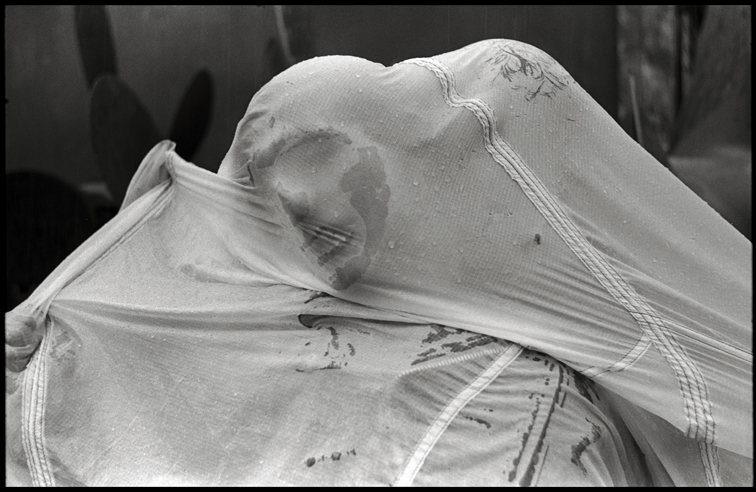
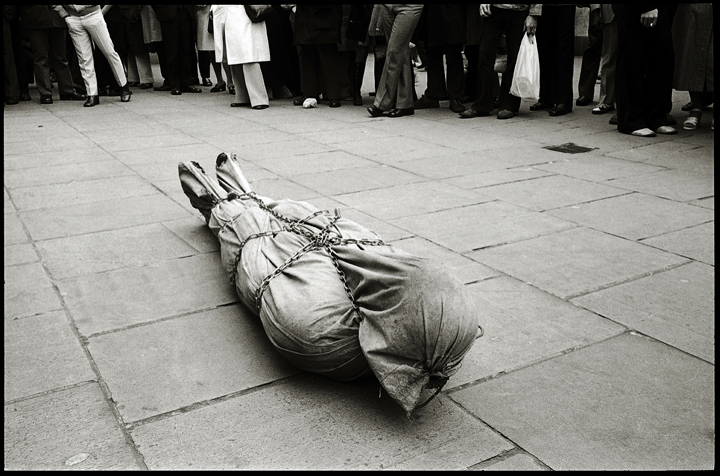
Skull, from Homage to Yukio Mishima Portfolio, 1975 (on left), The Artist and his Audience, London 1973 (on right), Sankai-Juku performer in Paris, 1980 (bottom) © Abe Frajndlich
Our naturally inhabited environments often serve as superior spaces for the Butoh experience than a stage that fundamentally carries within its architectural identity the tendency for segregation. Our cities, these cults of information, can never promise us constancy, which makes them magnetic for dancers who wish to take advantage of their innate spontaneity. The emotional complexities of accidental audience and the power of inescapable architecture allow Butoh dancers to engage the body as narrative in the most formidable ways, forcefully and with great relevance. The fluid environments of city streets challenge the temporal experience of spectacle, while conscious composition on the part of the dancer against the characters of buildings expresses a contrast to the monumental. We are constantly urged to consider the sensuous flexibility of flesh against the imperturbability of concrete; we are charged with interpreting the symbolic visual of Butoh which confronts us, but also, and perhaps most importantly, with comprehending the great absurdity made obvious within our constructed chaos.
And here we arrive at a most critical and surprising point: no matter where it is experienced, Butoh is not the sole responsibility of the dancer. It is a truly complete communication that involves everyone present. Butoh dance does not begin and end with the dancing body. Its puzzling spirit overflows from under the flesh of the dancer and absorbs into the essence of its viewers. Without our complete emotional surrender, Butoh performed with an audience is somewhat lessened. When the intention of the dancer is to share the Butoh experience, the dance is danced equally by the audience which opens its heart unconditionally, and to do this requires an immense faith in the emptying of a conditioned mind. There must be a desire to dissociate from the aesthetic conditions harbored within one’s self and to simply accept the intimate reality expressed by the dancer. Only in this way will there be space created for an empathetic experience of Butoh as opposed to a dancer’s voyeuristic exploitation.
– Maureen Freehill (Seattle-based Butoh dancer, Artistic Director of “Butopia”)
Butoh Dancer Spotlight: Tadashi Endo (Japan/Germany)
“In 1971 I saw HO-SO-TAN from Tatsumi Hijikata. It was a dark, grotesque and humid performance, completely different to all usual dance, but also poetic, [with a] beauty in-between kind of home feeling. In 1989, I met Kazuo Ohno, in Vienna and he asked me to help him translate his workshop and also his interviews.
Since then, there was a very familiar relationship between Kazuo Ohno and also Yoshito Ohno. We spoke about life, love and sorrow. When Kazuo Ohno saw my performance, he was so impressed and told me in front of the audience that he never saw such a touching, pure Butoh performance. I was very surprised and since then I called my dance Butoh MA.”
One interesting parallel you draw between music and Butoh is a connection with jazz: in what ways do you believe this genre is compatible with the essence of Butoh?
I prefer free jazz and [have] already performed with many very famous jazz musicians. Free jazz has the same “rules” [of] Butoh. The musicians don’t know exactly how the improvisation with other musicians or with dancers will end or develop. They just start and get into a kind of ecstasy and trance.
Using Space To Engage Body: Tetsuro Fukuhara & Space Dance Tube
Tokyo-based dancer and choreographer Tetsuro Fukuhara is leading what is perhaps one of the most experimental Butoh projects in the world. Fukuhara channels the quality of surrender in Butoh into a playful engagement with architecture. Participants enter a womb of cloth where, losing balance and even orientation, every movement they make shapes the space from within.
“Space Tube is not only a space to take balance away from the participants,” he explains, “but also to give a beloved feeling to them, because always, their movements decide the shape of Space Tube. We can’t find this kind of experience in our modern architectural society anymore.”
By interpreting the submission and physical improvisation of Butoh, Space Tube becomes less of an installation and more an extension of dance. “In short,” says Fukuhara, “the person who throws out his body naturally and makes one unity with Space Tube as a given environment is an expert.”
After bringing the Space Tube experience to Kampala, Uganda in 2009, Tetsuro Fukuhara received great praise from the local United Nations office. The simple experience of surrendering the body to its natural movement, and the openness to experience this almost embryonic joy, was rightfully recognized for its potential to heal. “Space Dance,” says the official United Nations statement, “could be a constructive technique working with rehabilitating children associated with armed conflict, and vulnerable youths orphaned by war.” Could there be a better reminder of the immense and humbling power that comes with the simplest interpretations of dance?
Tetsuro Fukuhara‘s Space Dance Tube.
Butoh Dancer Spotlight: Marie-Gabrielle Rotie (United Kingdom)
One particular workshop you offer focuses on the combined experience of Butoh and nature. In what ways do you believe that nature and geographical location can influence the choreography and spirit of Butoh?
Our bodies respond to the environment around us, shaped by sound, texture, space, architecture. So often, we live in urban environments divorced from noticing the change of weather, of season and of experiencing subtle shifts in nature. In dancing outside, in nature, I seek to reconnect to other states of awareness.
I find that participants are holding so much tension from just trying to keep going in a city environment. A lot of the work in nature is often to do with learning how to relax again and shed body armour, shed personas of survival. It can be quite emotional work for some people! In working with nature, I am looking to expand the experiences of my body, looking to be impacted by wind, water, rock, sky. Strangely, after a while, I start to remember that all this is very familiar, it is something lost and found.

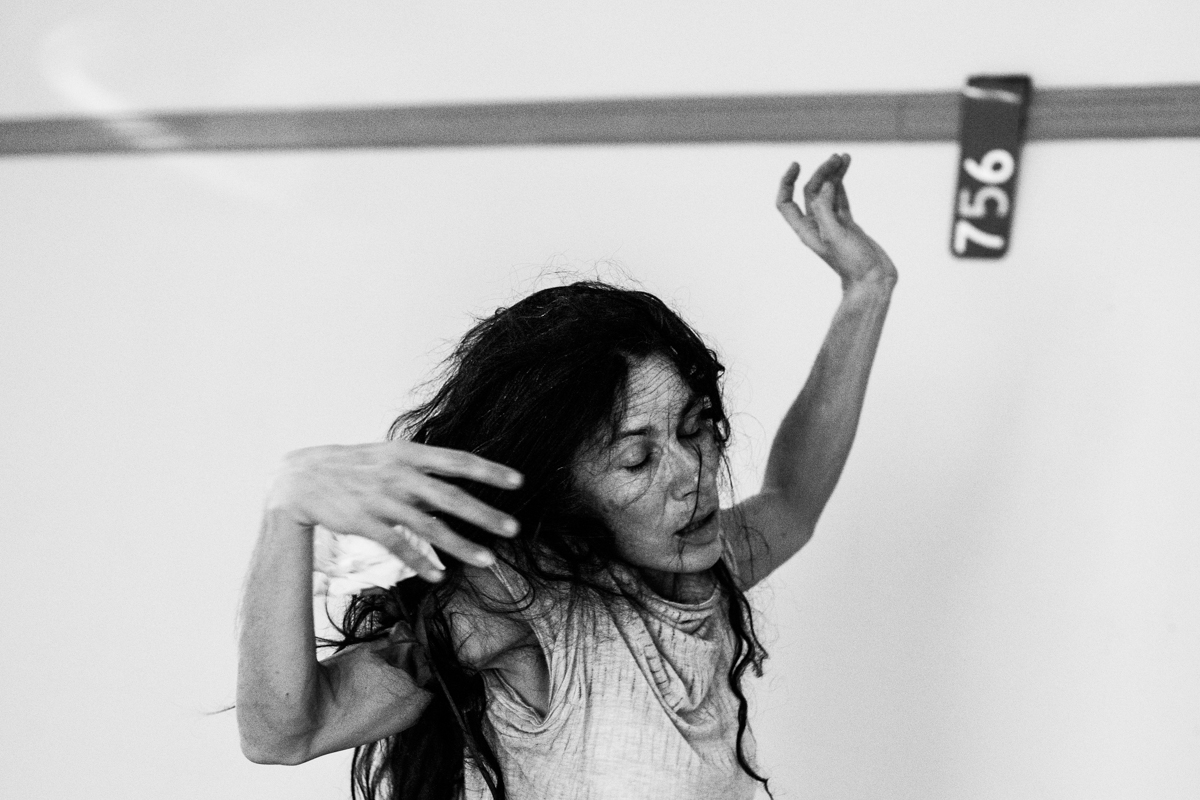


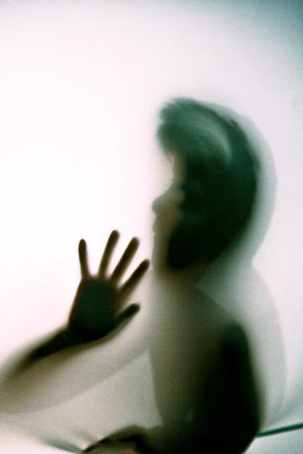
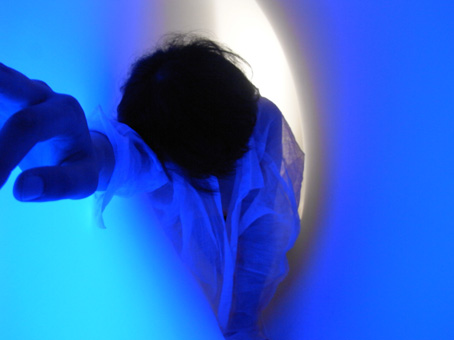
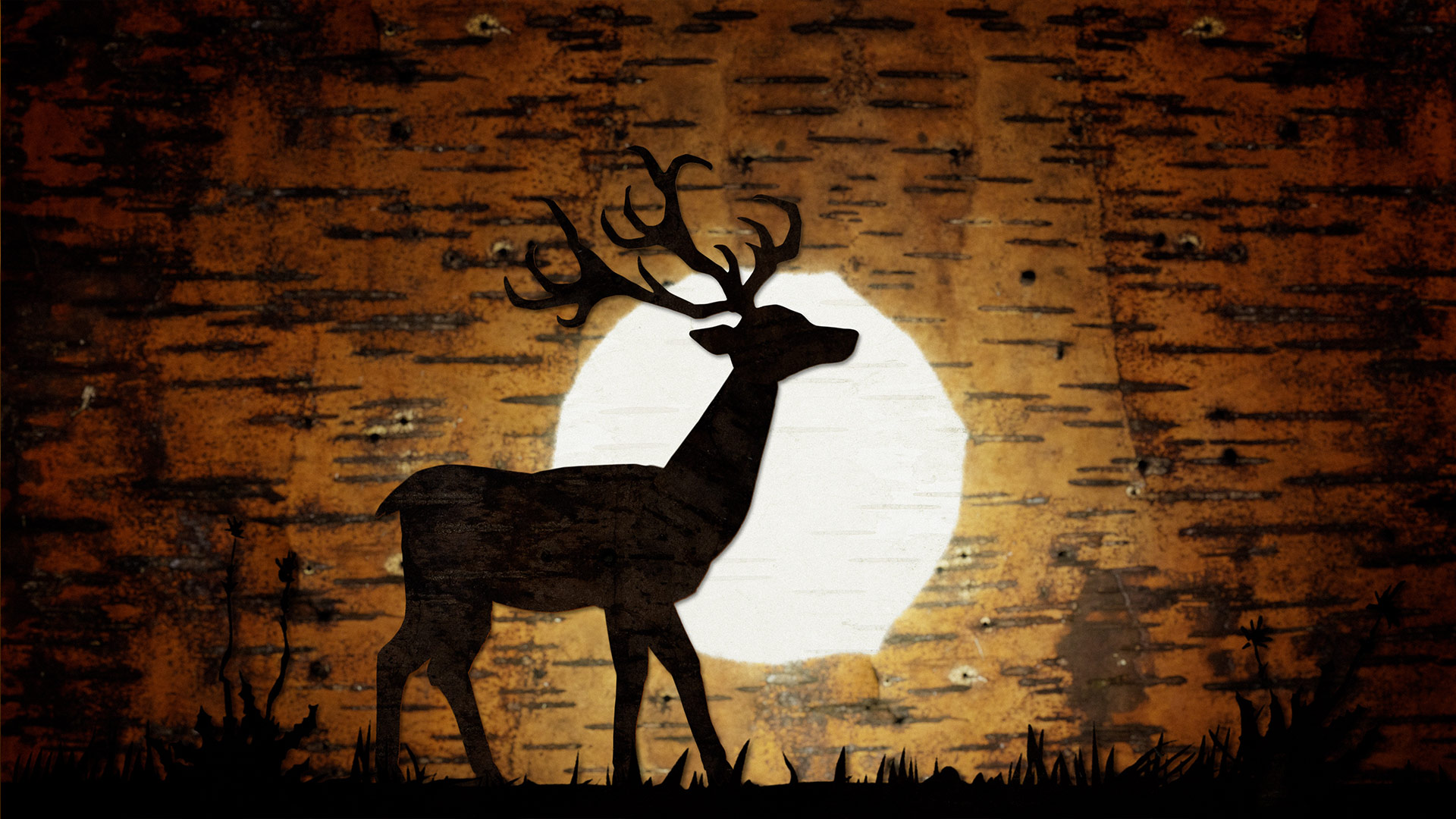
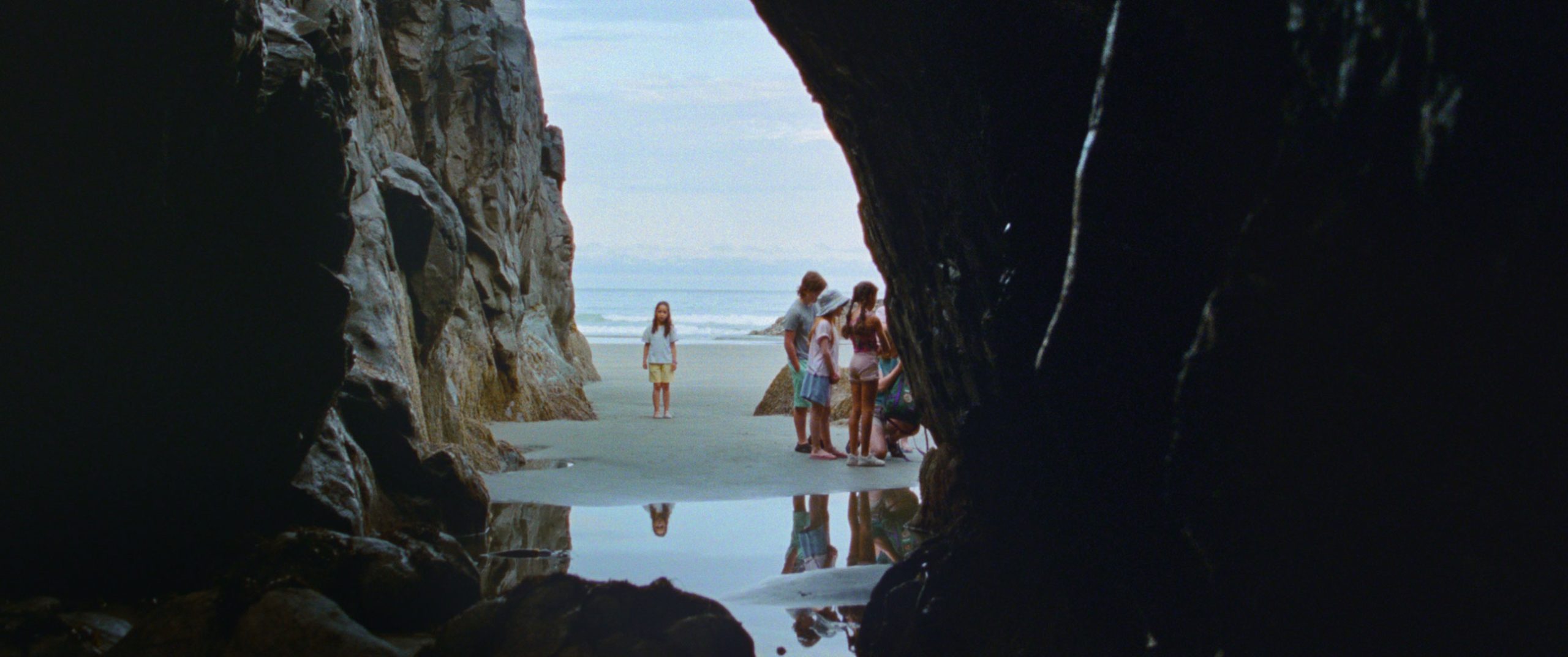
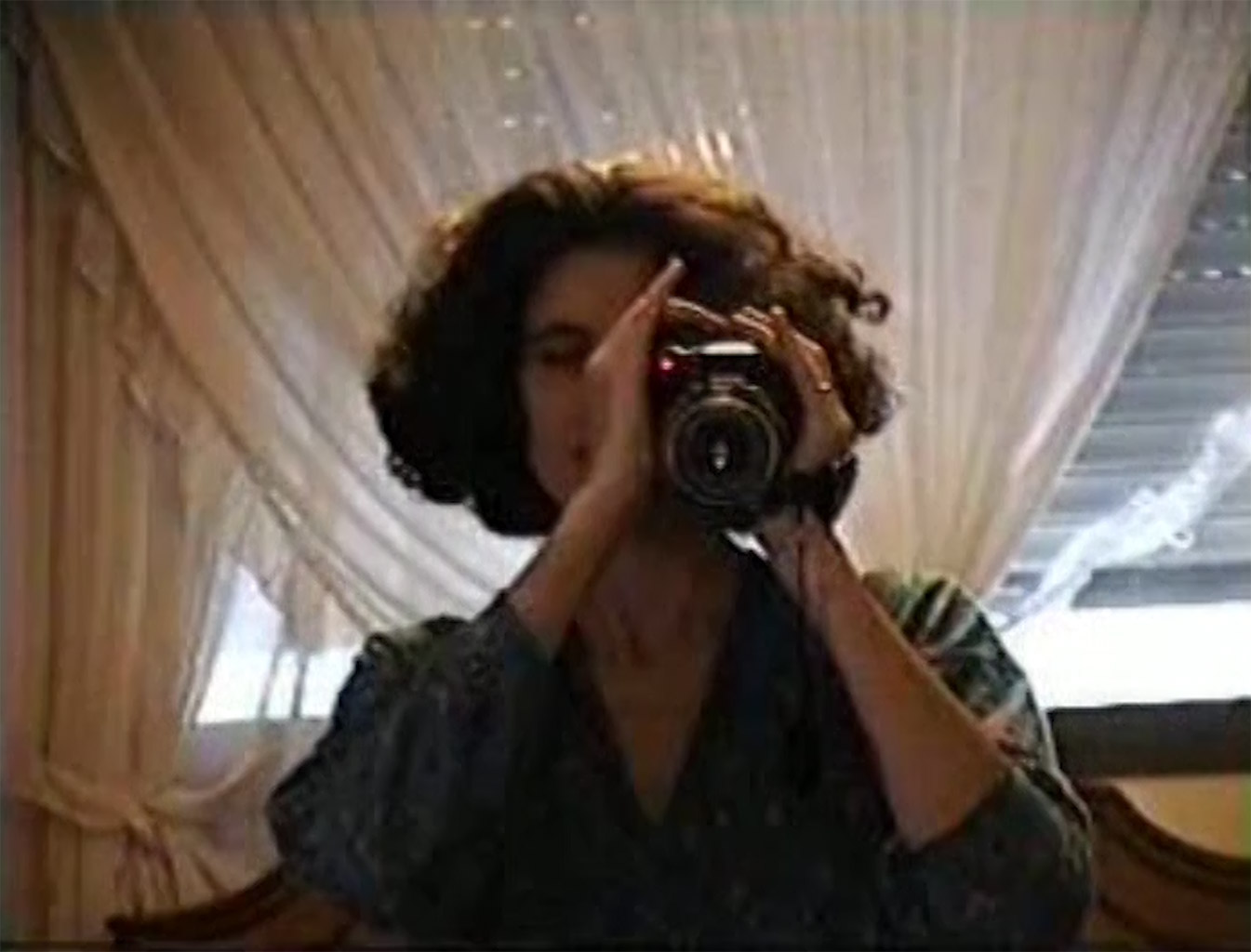
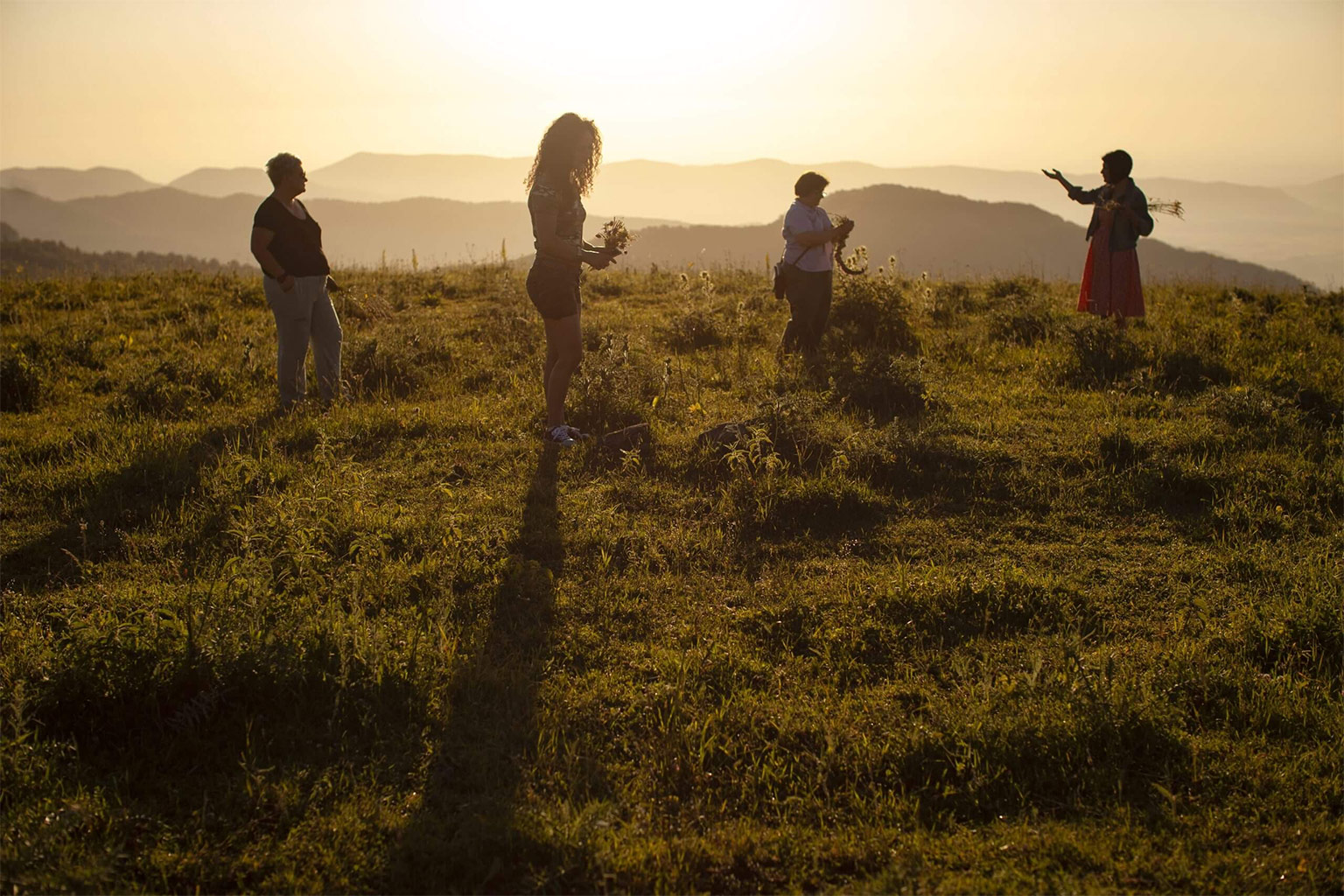
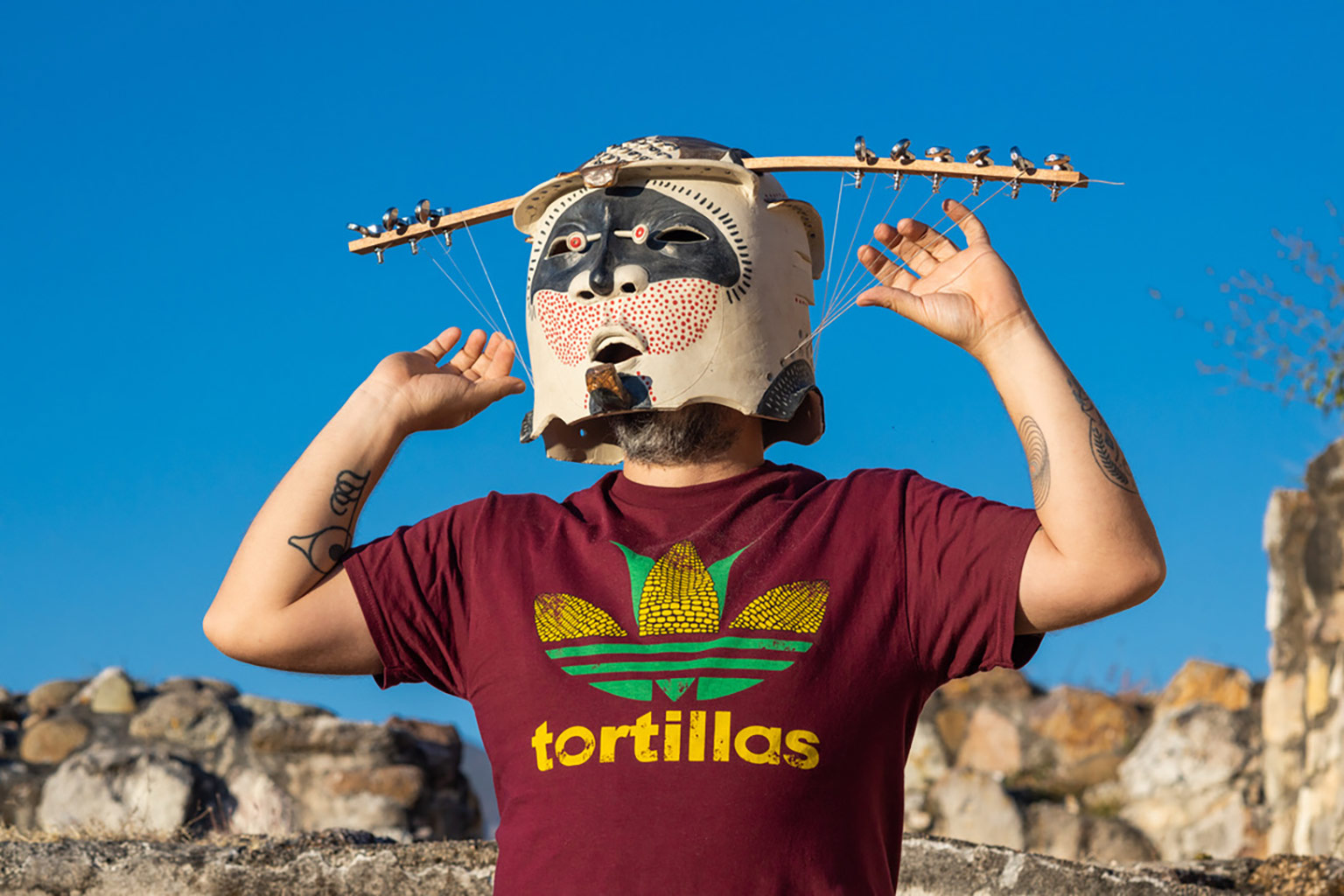
[…] Butoh Dancing (舞踏): Discovering Emptiness, Embodiment & Environment in an Archeology of Body: http://www.redefinemag.com/2013/international-butoh-dancing-emptiness-embodiment-environment-archeol… […]
Hi Yan, Thank you so much for your kind words 🙂 Glad you enjoyed the article!
Even if I was not honored to be interviewed by you in this article, I would still be very impressed with your research and perspective Lital. Thank you for your careful and thorough attention to this important art of our times. Hopefully it will inspire people to attend a performance or workshop themselves as that is really the definitive way for this art to be experienced — directly through the body in real time + space.
[…] ARTICLE: BUTOH DANCING (舞踏): DISCOVERING EMPTINESS, EMBODIMENT & ENVIRONMENT IN AN ARCHAEOLOGY OF BOD… // Redefine […]
[…] Discovering Emptiness, Embodiment & Environment in an Archeology of Body’. Available at: http://www.redefinemag.com/2013/international-butoh-dancing-emptiness-embodiment-environment-archeol… (Accessed: 12 June […]